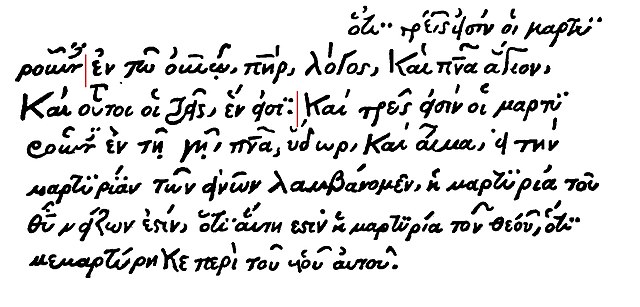Textus Receptus refers to the succession of printed editions of the Greek New Testament from Erasmus's Novum Instrumentum omne (1516) to the 1633 Elzevir edition.
"A text therefore you have, that has now by everyone been received [i.e. accepted, admitted]" (emphasis added): the words from the Elzevier 1633 edition, in Latin, from which the term "Textus Receptus" was derived. The image was edited to underline "Textum" and "receptum".
Desiderius Erasmus Roterodamus, the author of the Textus Receptus.
Comma Johanneum in the Codex Montfortianus
The last page of the Erasmian New Testament (Rev 22:8–21)
Novum Instrumentum Omne, later called Novum Testamentum Omne, was a bilingual Latin-Greek New Testament with substantial scholarly annotations, and the first printed New Testament of the Greek to be published. It was prepared by Desiderius Erasmus (1466–1536) and printed by Johann Froben (1460–1527) of Basel.
Erasmus
Leaf of Complutensian Polyglot Bible showing the start of Exodus, recto page. Upper part: Greek LXX with Latin interlinear; Latin Vulgate; Hebrew; Hebrew roots in margin. Lower part: Aramaic; Latin translation of Aramaic; Aramaic roots in margin.
First page of Preface, Annotations of the New Testament (1521), with characteristic Froben decoration
Acknowledgement page engraved and published by Johannes Froben, 1516

!["A text therefore you have, that has now by everyone been received [i.e. accepted, admitted]" (emphasis added): the words from the Elzevier 1633 editi](https://upload.wikimedia.org/wikipedia/commons/thumb/7/74/TextusReceptus1633.jpg/640px-TextusReceptus1633.jpg)






